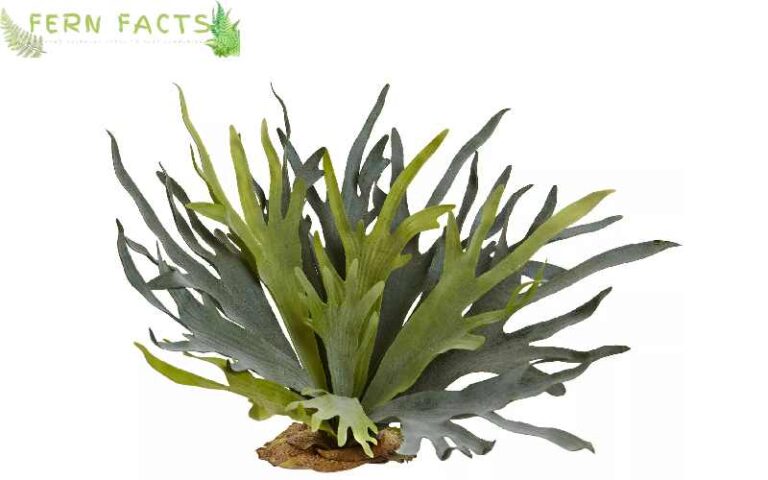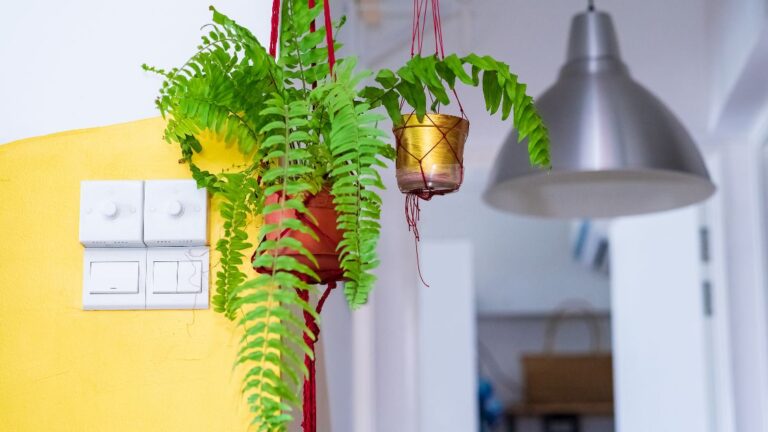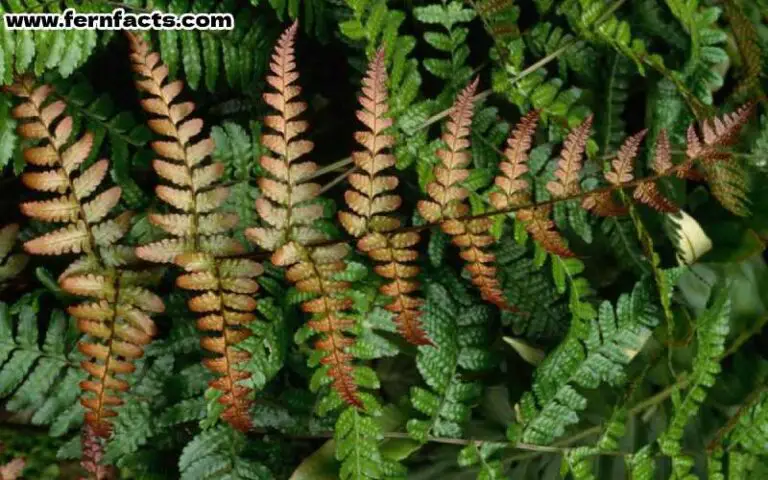Why is My Fern Dying – Reason and Solution
Are your ferns dying? Do you know the probable reasons behind your dying fern? If not, follow this article rigorously. Here, I’ll provide you with probable reasons behind your dying fern.
Side by side, I’ll guide you on how you can solve these problems at once. Further, I’ll also give you some extra tips and suggestions in order to have healthy bushy ferns in your homes. So let’s start the article.
Why is Your Fern Dying?- Reasons Behind It
If your most elegant and precious ferns are dying in front of your eyes, then there might be some possible reasons behind it. Here are some possible reasons are given below:
Reason 1: Seasonal Dying
If your fern is a deciduous or semi-evergreen plant then it’s their natural cycle of dying. Every deciduous or Semi-evergreen plant loses all its fronds in a particular season.
Mostly, it happens in winter, and in late autumn seasons, they tend to lose their green foliage. That’s why, if your ferns are losing all their fronds and beauty Don’t think they are dying.
If your fern is a deciduous or Semi-evergreen plant then they might lose all their fronds during those seasons. Hereby, Don’t be afraid of that because it’s just their natural seasonal dying.
Your ferns will gain fronds again during the spring seasons.
Reason 2: Extreme Sunlight
Extreme sun exposure can be another reason behind your dying ferns. If your ferns are somehow getting exposed to full sunlight, then their fronds will be burnt.
Direct exposure to sunlight can make their soil dry and also reduce the moisture level of the soil quickly. Even direct sunlight can make the fronds brittle or crispy.
Especially extreme summer heat might be dangerous for ferns which can lead your ferns to death.
Reason 3: Improper Watering
Improper watering might be one of the primary reasons behind your fern’s dying condition. As water is a plant’s food, overwatering or underwatering both can be equally harmful for your ferns.
Sometimes, too much moisture or lack of moisture in the soil makes your fern plants brown or yellowish. It’s a sign of a dying fern.
- Overwatering
overwatering can kill your precious fern plant. Because too much water makes the soil mushy and soggy. Eventually, their roots start to rot due to the extreme water level on the soil surface.
If your fern’s leaves are getting black then, they are probably dying due to overwatering.
- Under Watering
Relevantly, underwater is also another cause behind your dying ferns. If you give less water to your fern plants, the soil will be dried out.
And so, there will be no moisture in the soil. Ultimately, your plants will be dehydrated due to a lack of moisture. Further, there will not be any moisture in the fronds as well.
If your plant’s fronds are getting yellow and curled then probably your ferns are dying due to under water.
Reason 4: Low Humidity
Like most, all the ferns enjoy the humidity around them. They enjoy a damp, wet, and warm atmosphere. So if the weather is getting too hot or too cool, then they might not adjust to the weather.
Hereby, they lack low humidity in the environment. Further, low humidity can make their fronds or the tip of their fronds brown to crispy and dry.
How to Revive Dying Ferns: Solutions and Tips
Until now, we have discussed the reasons behind your dying fern. If your fern are deciduous plants or Semi-evergreen plants then wait for their growing seasons to come.
Don’t be disheartened as losing fronds is their natural cycle. But if your ferns are dying from mentioned other reasons, then you have to prevent those issues ASAP.
So, let’s look at the solution to get back your dying ferns.
An Ideal Shade Requirements
The majority of the ferns prefer partial to fully shaded places. It means they like indirect, bright, and dappled sunlight.
That’s why if you have placed your ferns in such places where they can get direct sun exposure, relocate your ferns right away. Place them in a bright, indirect sunlight area so that they can get an adequate level of lighting. For example, a north-facing window would be perfect for them to shift.
And so, you can keep your plants beside the window, door, balcony, or even bathroom where they will not be exposed to direct sunlight. It will prevent your plants from getting burned with excessive sun exposure.
Alternatively, for your outdoor ferns, replant them in shady places or a sheltered place where they will not get the direct rays of the sun. Under a tree canopies or some mature trees would be an ideal habitat place to plant your outdoor ferns.
Adequate Watering
Generally, most ferns prefer moist and damp conditions. That’s why your excessive love and care can kill your plants. Hence, stop overwatering your ferns as you already know the consequences.
Try to be very careful about watering your plants by understanding their characteristics and individual species requirements.
Not all the plants will need the same portion of water level to maintain their moisture in the soil. Try to pour a gentle round of water until you can observe the water level almost reaches the edges of the pot.
In general, you can water once a week for your indoor plants and twice a week for your outdoor plants. However, it will still vary according to the heat, environment, and season.
Because in winter, ferns don’t need much care and attention. So, your over-watering habit can kill your plants. That is why, in winter seasons you can pour water once a month according to the soil’s condition.
If you are unable to understand the moisture level, you can use a thumb checkup by pressing your thumb into the soil as well.
Adequate Level of Humidity
Most ferns prefer high humidity around themselves. In general, they prefer 50 to 70 percent humidity levels to thrive. However, in most cases, they don’t survive in less than 10 to 20 percent humidity.
It means ferns cannot survive in cooler or extremely hot climates. So, the best way to deal with this problem is to increase the humidity around your plants. For that reason, you can buy a humidifier from any marketplace.
Additionally, if you don’t wish to buy expensive products, then you can make a pebble tray for your ferns. Just take a tray and place some pebbles and water on the tray.
And put your ferns on the top of that tray. Your ferns will get moisture and humidity from that tray. Further, you can also spray on their fronds to make the fronds lively and greenery.
Ideal Temperature
The ideal temperature is between 65°F to 75° F which can keep them in a cooler environment without getting direct sun exposure.
They cannot tolerate too much cold or too much-heated weather. If you are living in a warm atmosphere then you need to balance the temperatures.
Try not to place them near any heated room objects like ovens or chimneys. It will give them more heat and ultimately make your fern’s fronds dry and curled. However, you can place them in bathrooms where they can get damp.
On the contrary, during winter seasons do not let your ferns dehydrate due to dryness. Most ferns cannot tolerate frost conditions. That’s why you can use mulch in the soil which will add extra moisture in the soil and make your plants hydrated even in the winter seasons.
Similarly, to give extra warmth during frosty situations, you can wrap your ferns with a burlap or plastic wrapper. This will provide beneficiary warmth to your plant’s roots.
Extra Care for Having Thriving and Bushy Fern
After assuring their general growing requirements, you may follow up on these extra care and maintenance tips in order to have thriving ferns at your house.
Occasional Pruning
Not all ferns require extreme levels of pruning and grooming. That’s why, during their growing seasons (spring or summer) you just pull off the dead, damaged, and burned fronds with any scissors.
Because it will make their appearance neat and clean. It will also impact their growth.
Yearly Fertilizing
Furthermore, feeding or fertilizer also boosts ferns’ growth. Fertilizer will add beneficiary nutrients to the plant’s roots and enhance their growth.
That’s why in the early spring or late winter seasons, you can feed your plants according to your plant species. You can use chemical fertilizer, liquid fertilizer, water-soluble fertilizer, or organic fertilizer.
Just follow the instructions before applying fertilizer to your ferns. Because over-fertilization can kill your plants. Equivalently, less fertilizing can stop the growth at once.
Yearly Reporting
Similarly, repotting also provides extra development to the plant. You must report your ferns every 2 to 3 years later. Due to their developmental growth, they might be rootbound in the smaller pots. That’s why they will need bigger pots to accommodate them.
Wrap Up
In short, ferns are a renowned and low-maintenance plant to have for any gardener or a beginner. However, being a plant lover, sometimes your extra care or affection can kill your ferns. Conveniently, your ignorance and lack of sincerity can also kill your ferns.
Although they are low-maintenance plants, still they will require some basic care, if not they tend to die gradually. Generally, extreme sunlight, low humidity, and overwater/ underwater all these causes can be the reasons behind your dying ferns.
However, you can get back your ferns by maintaining and addressing these issues right away. By providing them adequate shade, watering, humidity, and temperature you can keep your fern back from dying.
Further, you can also enhance their growth by taking some extra care like occasional pruning, yearly fertilizing, and repotting. All these maintenance can give you healthy thriving ferns at your house.







